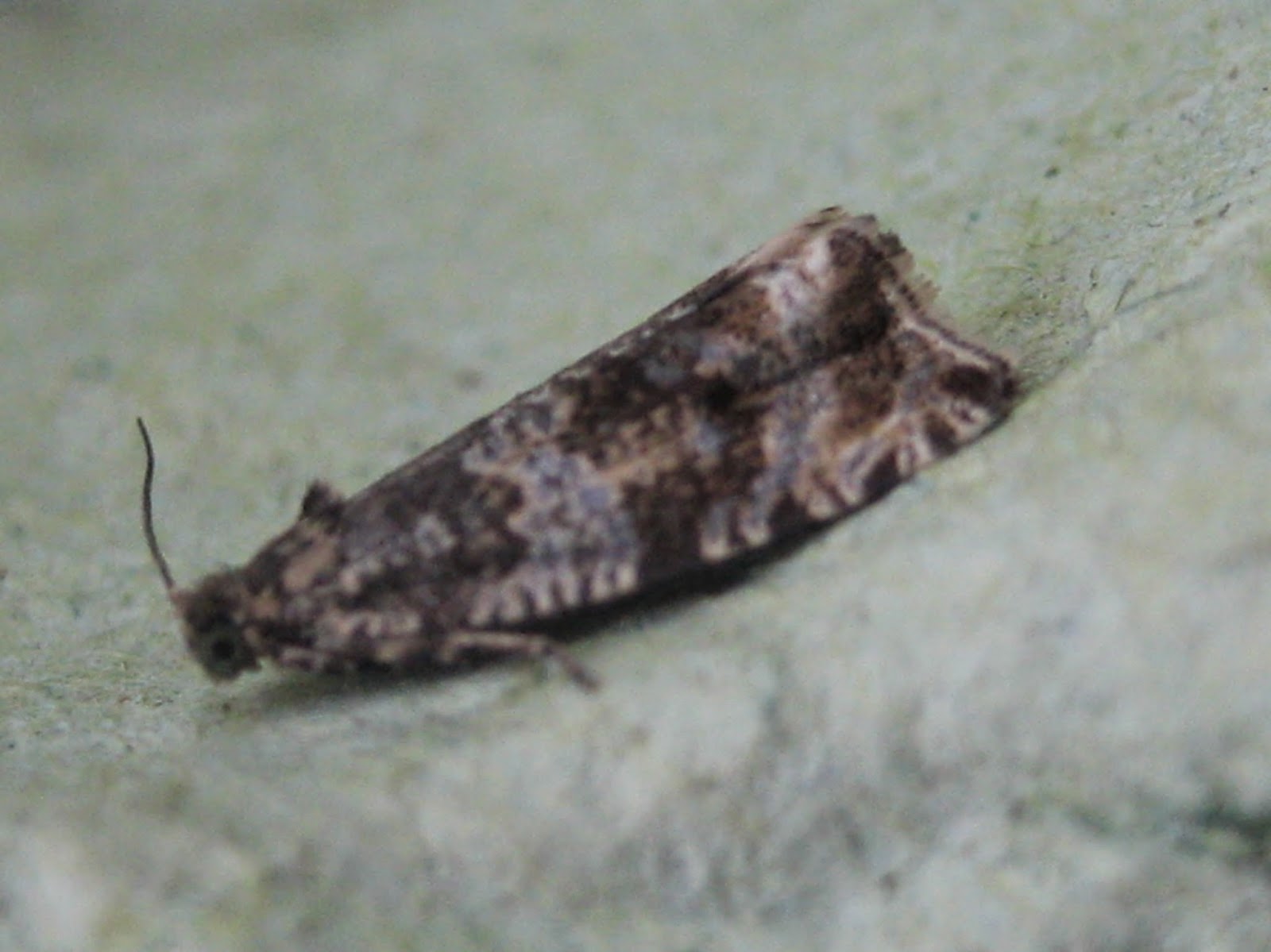The last couple of nights in Wolvercote, Oxon, have returned to reasonable numbers of individuals and species: enough to take a while to work through. The 29th brought our first Eyed Hawkmoth of the year (only our second ever), and a garden record of six Poplar Hawkmoths, as well as the year's first Common Wave; and the 30th brought two
Telechrysis tripuncta, possibly suggesting there's a reasonable-sized local population, plus the year's first Blood Veins and Straw Dot. We think it also brought our first (appropriately-named) Uncertain of the year, plus a Mottled Beauty and a Small Clouded Brindle (judging by the white-outlined kidney spot), which would be a garden first.
 |
| Presumed Mottled Beauty, 30/5/14 |
 |
| Presumed Small Clouded Brindle, 30/5/14 |
 |
| Uncertain living up to its name, 30/5/14 |
Inevitably there are some we're not so sure of: what I think may be an
Epiblema scutulana (similar, to my eye, to a
Notocelia cynosbatella, but the head isn't obviously yellow and the wing-pattern is different); a possible rather washed-out Grass Rivulet; and what looks like a
Cochylimorpha straminea, though there are alarming number of similar species in the micro-moth Field Guide.
 |
| Possible Epiblema scutulana, 30/5/14 |
 |
| Possible Grass Rivulet, 30/5/14 |
 |
| Possible Cochylimorpha straminea, 30/5/14 |
And I'm afraid there are several we're very unclear on: one which may well not be a moth at all (but is rather a pretty insect); and an unfamiliar micro and macro, both of which I've searched for in vain in books and on the Flying Tonight website. As ever, we're very grateful for all confirmations and suggestions. Steve and Xander Goddard.
 |
| :Possibly not a moth at all |
 |
| Unknown micro, 30/5/14 |
 |
| Unknown macro, 30/5/14 |












































.JPG)






